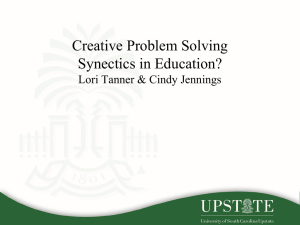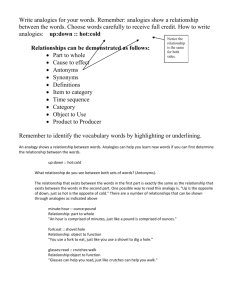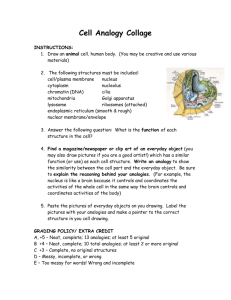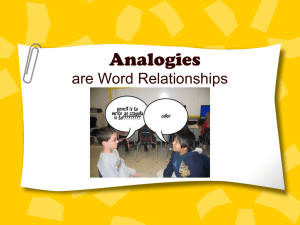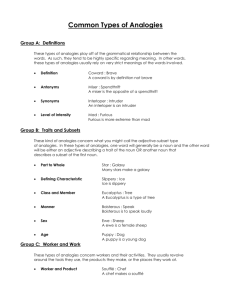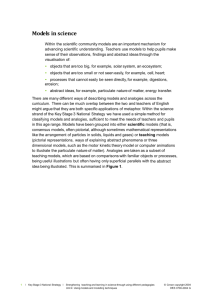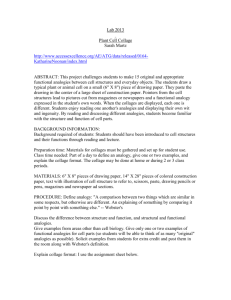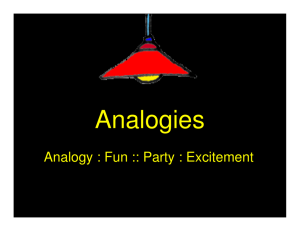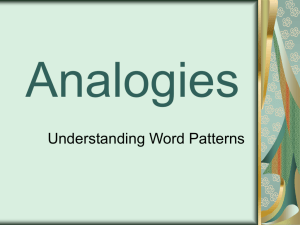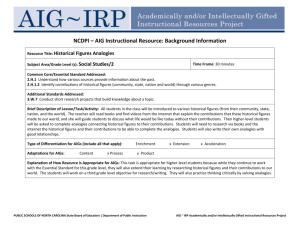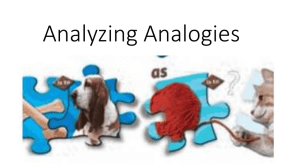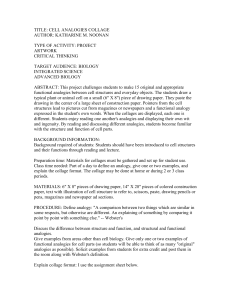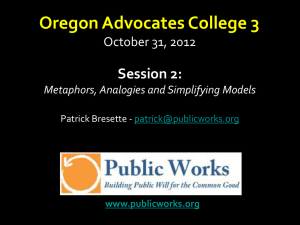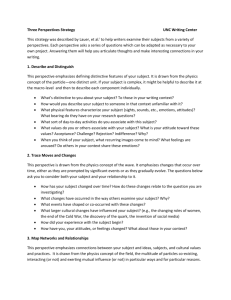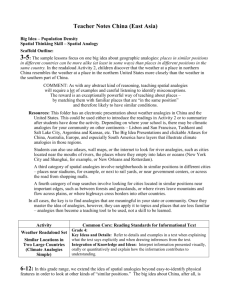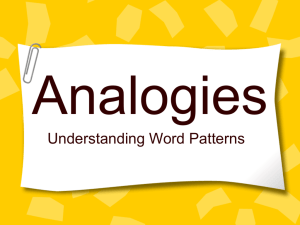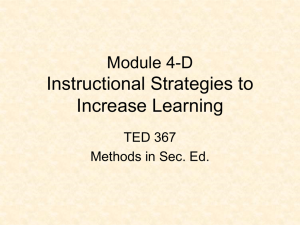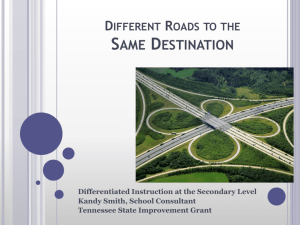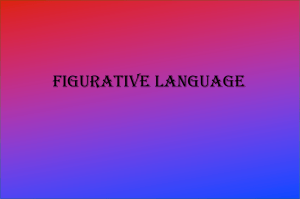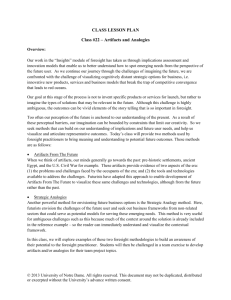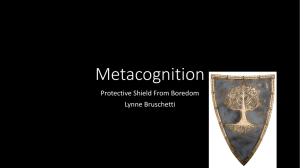07 — Chapter Seven – Synectics
advertisement
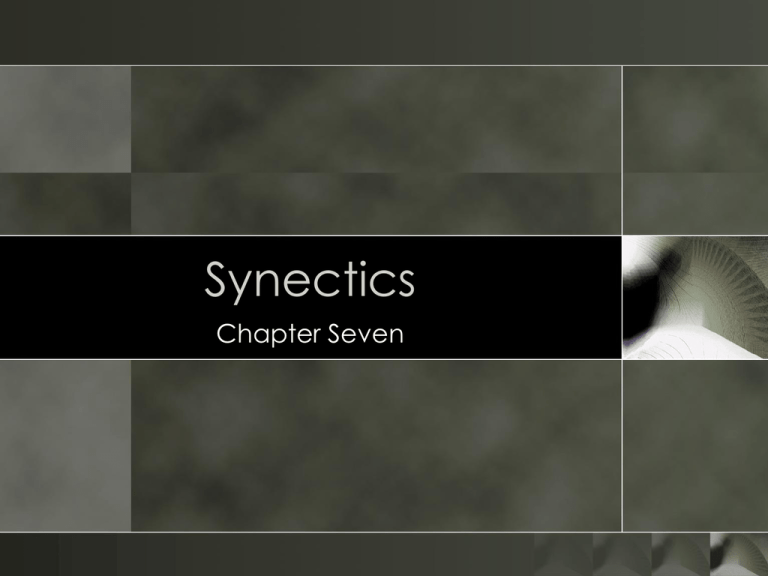
Synectics Chapter Seven Thinking with Analogies: Comparisons and Compressions Bill Gordon and George Prince developed synectics to bring creative thinking out of a magical , genetically-driven domain, into the world of learnable strategies for approaching problems and demanding tasks. Gordon brought synectics to education. Prince focused on institutions, particularly businesses in many areas of endeavor. Analogies, Analogies, Analogies The only problem with new problems is that we come to them with old solutions. One reason to approach life as a creative investigation is that it helps us figure out whether our learned solutions are in need of rehab. One of the best ads we have seen for seeking fresh approaches to recurring tasks was on a ski slope. The PA system cheerfully intoned “Why practice your mistakes? Do come to ski school.” Analogies, Analogies, and Analogies Problem is, we DO repeat (practice) our mistakes. We tend to wedge puzzling problems into familiar paradigms to which we can apply off-the shelf solutions. Think of how schools deal with “truancy.” If a student skips school, he is a law breaker and punishment is in order, so the school suspends the person, thus making missing school the result of missing school. Skip school again, and be expelled. -- Student practices mistake, district practices mistake. Lose, lose. So, how do we get some distance – see things differently? Gordon says the difficulty begins in how we define a problem. We have to back off and see it through new eyes. And, then, instead of using an old solution just because we have it, seeking a new one. Analogies became a gateway to opening our eyes – to redefine problems (and commonplace tasks like writing require problem-solving) and find fresh solutions. -- Look on models of teaching.org and find a couple of demonstrations, and see the students generate a few new ideas.
